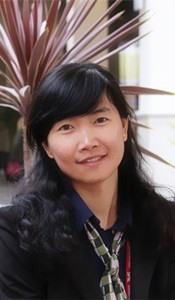Program Information
Dictionary Learning Based Reconstruction with Low-Rank Constraint for Low-Dose Spectral CT
Q Xu1,2*, H Liu2 , H Yu3 , G Wang4 , L Xing2 , (1) Xi'an Jiaotong University, Xi'an, China, (2) Stanford University School of Medicine, Stanford, CA, (3) University of Massachusetts Lowell, Lowell, MA, (4) Rensselaer Polytechnic Instit., Troy, NY
Presentations
MO-DE-207A-5 (Monday, August 1, 2016) 1:45 PM - 3:45 PM Room: 207A
Purpose:
Spectral CT enabled by an energy-resolved photon-counting detector outperforms conventional CT in terms of material discrimination, contrast resolution, etc. One reconstruction method for spectral CT is to generate a color image from a reconstructed component in each energy channel. However, given the radiation dose, the number of photons in each channel is limited, which will result in strong noise in each channel and affect the final color reconstruction. Here we propose a novel dictionary learning method for spectral CT that combines dictionary-based sparse representation method and the patch based low-rank constraint to simultaneously improve the reconstruction in each channel and to address the inter-channel correlations to further improve the reconstruction.
Methods:
The proposed method has two important features: (1) guarantee of the patch based sparsity in each energy channel, which is the result of the dictionary based sparse representation constraint; (2) the explicit consideration of the correlations among different energy channels, which is realized by patch-by-patch nuclear norm-based low-rank constraint. For each channel, the dictionary consists of two sub-dictionaries. One is learned from the average of the images in all energy channels, and the other is learned from the average of the images in all energy channels except the current channel. With average operation to reduce noise, these two dictionaries can effectively preserve the structural details and get rid of artifacts caused by noise. Combining them together can express all structural information in current channel.
Results:
Dictionary learning based methods can obtain better results than FBP and the TV-based method. With low-rank constraint, the image quality can be further improved in the channel with more noise. The final color result by the proposed method has the best visual quality.
Conclusion:
The proposed method can effectively improve the image quality of low-dose spectral CT.
Funding Support, Disclosures, and Conflict of Interest: This work is partially supported by the National Natural Science Foundation of China (No. 61302136), and the Natural Science Basic Research Plan in Shaanxi Province of China (No. 2014JQ8317).
Contact Email:

